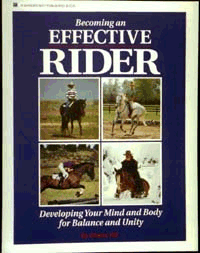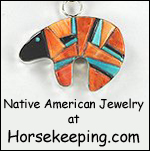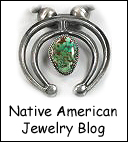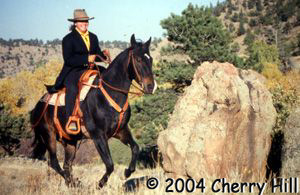 Fly Gear For Horses
Fly Gear For Horses
A well-fitting fly mask can protect the sensitive areas of a horse’s head from flies or gnats without the use of chemical sprays or creams. Sometimes applying a mask often makes a nervous horse noticeably calmer, perhaps partly because it stops flies and partly because of reduced visual stimuli.
A fly mask can also be used to protect a horse’s eyes from wind-blown objects when trailering a horse in an open trailer or during turnout and from dust and contact when treating an eye for an injury. A mask that blocks more light can give relief to a horse with light-sensitive eyes.
A mask fastener such as Velcro® that will release under strain is preferable over an unyielding snap or buckle for use during turnout or for use on unsupervised horses. If a horse should catch the mask on something and the fastener doesn’t release, it’s likely that either the mask will be damaged or the horse will be injured, or both.
For best results make sure the mask fits properly—horses’ heads vary greatly in size and shape and so do fly masks. A free-form mask made of soft, supple mesh will fit a wide range of head shapes, but the draping material usually lays against the eyes or lashes, which could cause the eyes to weep and lead to irritation and head rubbing. Masks made of stiffer material usually have eye darts formed to hold the material away from the eyes. Darts should center over the horse’s eyes and be peaked to prevent contact with any part of the eye.
© 2010 Cherry Hill © Copyright Information
A fly mask should seal around the horse’s face so flies aren’t able to crawl under the mask. Long, fluffy fleece on the edges allows a good seal without having to adjust the mask uncomfortably tight, but it is a debris magnet and it can cause a horse to sweat—both of which can cause a horse to rub his face on the nearest object. Smooth edging like elastic, vinyl, or polar fleece (synthetic fleece with a very short nap) may not seal as well as long fleece, but it will be less likely to attract debris or cause rubbing.
A mask should protect as much of the furrow under the jaw as possible—this is one place gnats will dig in. But a mask can only encircle the nose so far down without interfering with jaw movement. For additional muzzle protection, choose a mask that has a muzzle guard.
Muzzle Guard
A muzzle guard is either integral to a fly mask or it attaches to a mask, halter or bridle. It protects a horse from those nasty no-see-ums or nose bots that can drive him insane and make him dangerous to handle. A muzzle guard is especially good for a horse that is hypersensitive to flies around his nose.
A muzzle guard should protect the nostrils without interfering with breathing or with the action of the bit. The more opaque the fabric of a muzzle guard, the better it will protect sensitive skin from sunburn.
Neck cover
A neck cover wraps around a horse’s neck and fastens with snaps or Velcro®. Some neck covers are an integral part of the fly sheet while others detach or can be rolled back and fastened out of the way, much like the hood of a jacket. A neck cover protects that sensitive area where the neck and chest join, a spot where crusty scabs often form from feeding flies.
Hood
A hood combines a fly mask with a neck cover. It overlaps and attaches to a flysheet with Velcro® or snaps. It provides more complete coverage than a separate mask and neck cover because it eliminates the space between them.
Applying Fly Gear
Before applying any type of fly gear, make sure the horse is clean and free of loose, shedding hair. Otherwise the horse will be more likely to rub. Also clean all traces of bedding, seeds, or burrs from the fly gear itself, especially from long fleece lining and from Velcro®. This will reduce irritation that causes rubbing and will allow the Velcro® to hold better.
Wearing a fly mask for the first time is no big deal for most horses. But a horse that’s not used to the sound of Velcro® being pulled apart can be frightened by it—sack your horse out to the sound before applying fly gear that uses it.
To prevent injury to the horse and damage to his fly clothing, make sure the horse gets used to wearing an item before leaving him unattended. Any horse that’s wearing fly gear should be checked at least once a day for fit and for signs of irritation and rubbing, and to remove irritating debris.
Breakaway halter
Some fly gear such as a muzzle guard or browband attaches to a halter. It’s not uncommon for a horse turned out wearing a standard halter to suffer injury or even death when he gets the halter caught on a post, a branch, or even his own horseshoe. If your horse needs to wear a halter during turnout, use only a break-away (safety) halter. A safety halter usually has either has a “weak link” or “fuse” of light leather or other material that’s designed to break under stress, or it has a Velcro® fastener that will come undone if the halter gets caught and the horse pulls.
Ear Bonnet
Insects entering your horse’s ears can not only cause annoying and dangerous head shaking but can also cause serious skin infections. An ear bonnet covers the horse’s ears and can be a part of a fly mask or a separate piece held in place by the bridle or halter.
The ear holes in a bonnet should be spaced the same as the horse’s ears and should be large enough so as not to rub or put pressure on the base of the ears. There should be ample room inside a bonnet so that the ears don’t deform and the material should be flexible enough to allow a full range of free ear movement.
Leg wraps and bands
Leg wraps are usually made of the same poly/vinyl fabric as flysheets, and wrap around a horse’s canons to keep flies off. Some models extend down over coronary band and cover the back of the pastern where flies like to bite. Leg bands containing fly repellents are only a few inches wide and are applied around the canons. You can apply fly spray to any leg wraps to increase fly protection.
Don’t apply leg wraps or bands too tightly—you should be able to easily slip a finger behind them. Most models have fleece or vinyl trim to keep flies from getting underneath. As with other fly gear, short fleece or vinyl trim is a better choice if a horse is likely to be exposed to weed seeds or burrs.
Tail bag
A horse’s own best weapon against flies is a long, full, healthy tail. But some horses, for whatever reason, don’t have a full tail and show horses often have their tails braided or wrapped to protect them from damage. A tail bag with a tassel on the end can protect a tail and give it added reach.
Collar
Fly repellent collars containing natural (such as citronella or cedar oil) or artificial insect repellents (such as permethrin) can be used to keep flies and mosquitoes away from a horse’s neck. Some collars are applied snug while others should be loose—follow manufacturer’s instructions.



Read Full Post »
































